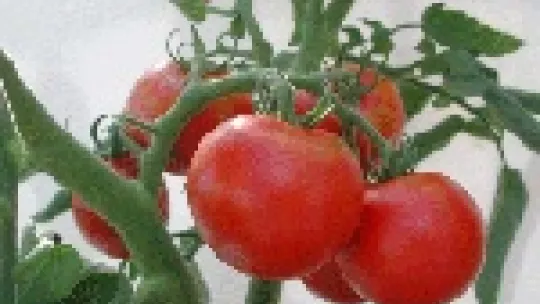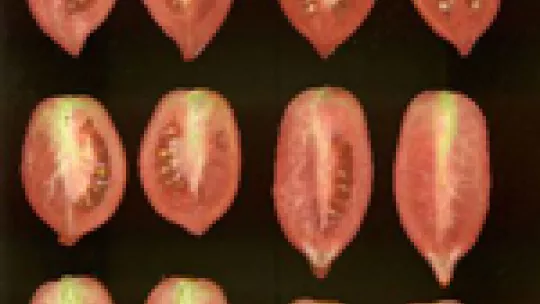Images
The Tomato Genome Consortium has sequenced and assembled the genomic DNA of this fruit species, specifically of a domesticated variety, Heinz 1706. Scientists from several European centres, including Modesto Orozco, David Torrents and Xavier Pastor, researchers from the joint programme between the the Barcelona Supercomputing Center (BSC-CNS) and the Institute for Research in Biomedicine (IRB Barcelona) have joined forces to obtain the sequence of this fruit belonging to the family Solanaceae. The sequence, as well as the results of its analysis, has just been published in the journal Nature.
The sequence of any genome provides key information to study and reconstruct the evolution of organisms. Identifying the signals that suggest key episodes in the evolution of a species is done by extensively comparing genomes. For this study, the tomato genome was compared with several closely related species, including a wild variety of tomato, potatoes, and grapes. These comparisons have revealed that the tomato genome, like those of many other plants, has undergone complete duplications during its evolution.
These events are extremely relevant from an evolutional point of view, since they offer an optimum framework for genes affected by these duplications to explore new functions that contribute to the evolution and improvement of the species. In the specific case of this tomato species, there is empirical proof that its genome has experienced two rounds of triplications over the past 120 million years of its evolution. One of them probably took place before grapes and tomatoes evolved along different paths. Another more recent one goes back to a common ancestor of tomatoes and potatoes. The study also reveals that, for tomatoes, these triplications have had a particular impact on the genes controlling features such as their texture, colour and maturation.
The sequencing and publication of the genomic sequence of this tomato establishes the molecular basis to study this species and to explore methods of cultivation to promote resistance to pests and water scarcity, and to facilitate growing this species in poorer and more arid regions.
Additionally to the BSC-CNS and the Institute for Research in Biomedicine (IRB Barcelona), the following Spanish scientific institutions have cooperated in this paper: CNAG, Spanish National Bioinformatics Institute, Centre for Genomic Regulation, Instituto de Biología Molecular y Celular de Plantas (CSIC-UPV), Instituto de Hortofruticultura Subtropical y Mediterránea La Mayora (UMA-CSIC), ICREA and the company Sistemas Genómicos del Parque Tecnológico de Valencia.
Author: Barcelona Supercomputing Center Press Office
About IRB Barcelona
The Institute for Research in Biomedicine (IRB Barcelona) pursues a society free of disease. To this end, it conducts multidisciplinary research of excellence to cure cancer and other diseases linked to ageing. It establishes technology transfer agreements with the pharmaceutical industry and major hospitals to bring research results closer to society, and organises a range of science outreach activities to engage the public in an open dialogue. IRB Barcelona is an international centre that hosts 400 researchers and more than 30 nationalities. Recognised as a Severo Ochoa Centre of Excellence since 2011, IRB Barcelona is a CERCA centre and member of the Barcelona Institute of Science and Technology (BIST).








